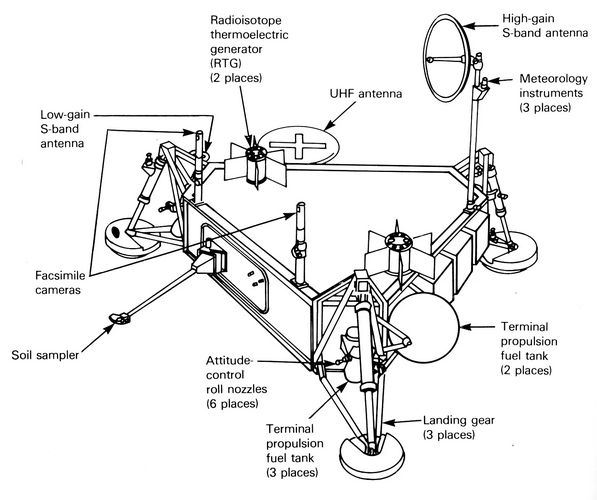- Joined
- 16 December 2010
- Messages
- 3,743
- Reaction score
- 4,070
After the cancellation of Voyager(Mars) in 1967 NASA started up a new series of studies to come up with a spacecraft for the 1973 launch opportunity.
This Martin-Marietta designed soft-lander of 1969 was intended to put the maximum payload weight on the surface of Mars using a mission profile not dissimilar to the later Pathfinder/MER/Curiosity missions.
The solar-powered lander was designed to last 90 days on the surface with the major mission science objectives being completed within the first three days after landing.
Final Summary Report, Study Of A Soft Lander/Support Module for Mars Missions, Volume 1 - Summary
http://ntrs.nasa.gov/archive/nasa/casi.ntrs.nasa.gov/19690006268_1969006268.pdf
Final Summary Report, Study Of A Soft Lander/Support Module for Mars Missions, Volume 2 - Subsystems Studies
http://ntrs.nasa.gov/archive/nasa/casi.ntrs.nasa.gov/19690006269_1969006269.pdf
Final Summary Report, Study Of A Soft Lander/Support Module for Mars Missions, Volume 3 - Appendixes
http://ntrs.nasa.gov/archive/nasa/casi.ntrs.nasa.gov/19690006270_1969006270.pdf
This Martin-Marietta designed soft-lander of 1969 was intended to put the maximum payload weight on the surface of Mars using a mission profile not dissimilar to the later Pathfinder/MER/Curiosity missions.
The solar-powered lander was designed to last 90 days on the surface with the major mission science objectives being completed within the first three days after landing.
Final Summary Report, Study Of A Soft Lander/Support Module for Mars Missions, Volume 1 - Summary
http://ntrs.nasa.gov/archive/nasa/casi.ntrs.nasa.gov/19690006268_1969006268.pdf
Final Summary Report, Study Of A Soft Lander/Support Module for Mars Missions, Volume 2 - Subsystems Studies
http://ntrs.nasa.gov/archive/nasa/casi.ntrs.nasa.gov/19690006269_1969006269.pdf
Final Summary Report, Study Of A Soft Lander/Support Module for Mars Missions, Volume 3 - Appendixes
http://ntrs.nasa.gov/archive/nasa/casi.ntrs.nasa.gov/19690006270_1969006270.pdf
Attachments
Last edited:









































